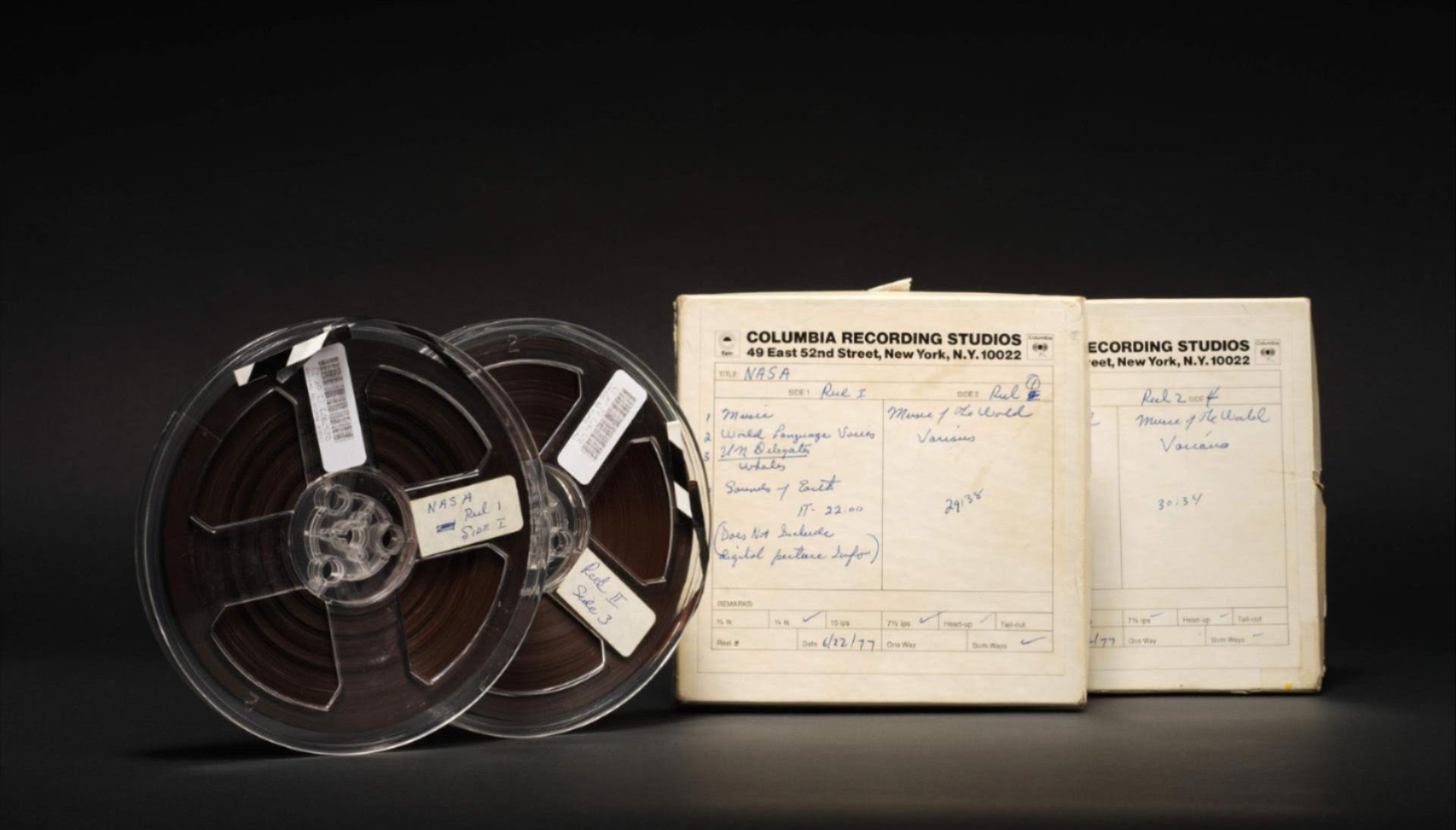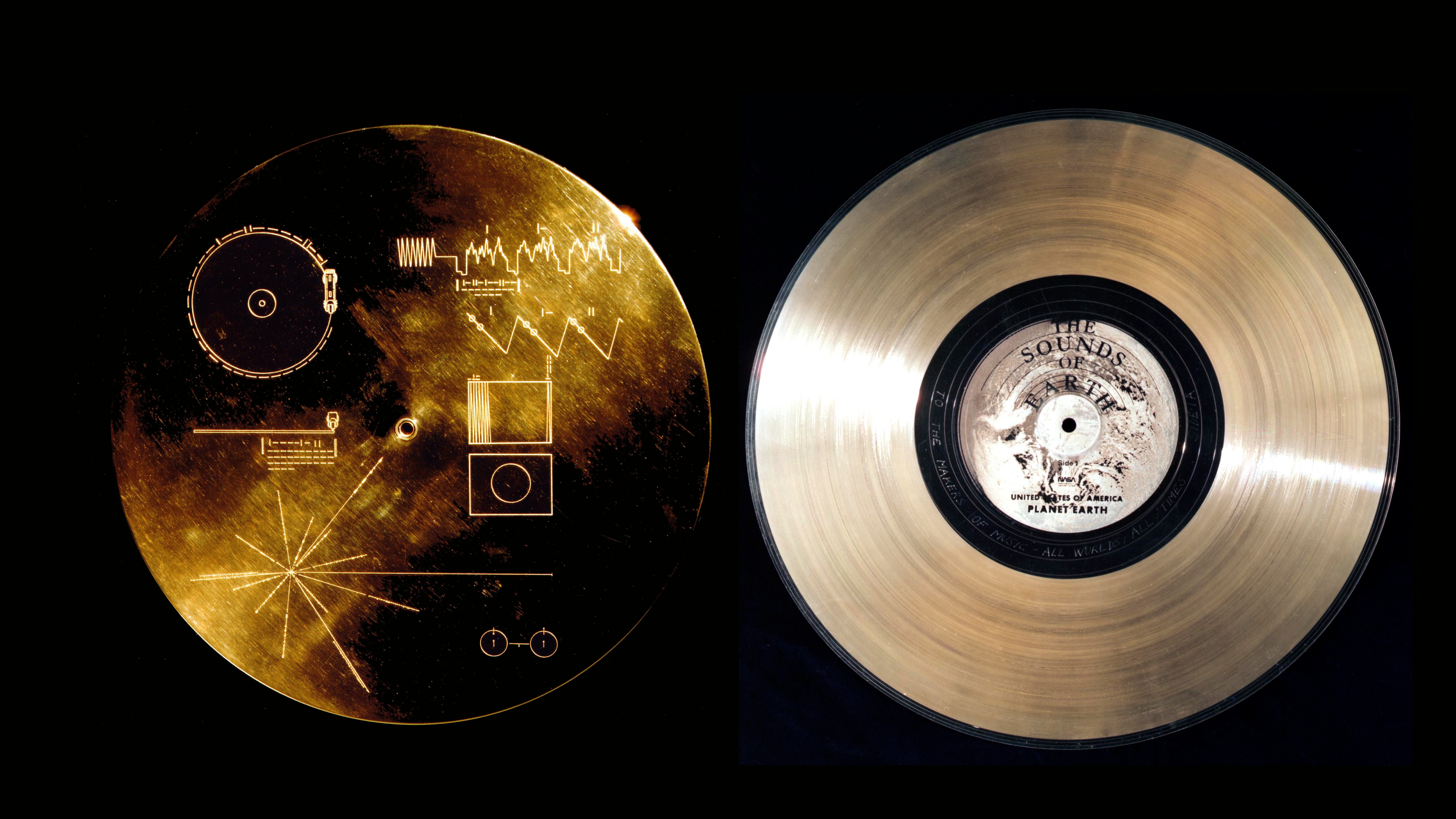
Nearly 46 years ago, NASA launched two small probes carrying a pair of gold-plated copper records that would soon become the farthest human-made objects from Earth ever created. The probes — named Voyager 1 and 2 — and their golden payloads are currently floating more than 12 billion miles (19 billion kilometers) from Earth, and gaining distance every day. But this week, you can add a master copy of those legendary records to your personal vinyl collection without even leaving your home — and all you need is half a million dollars.
On July 27, Sotheby's will auction two double-sided reels of audio tape containing the master recordings of the Voyager Golden Record, plucked from the personal collection of celebrity astronomer Carl Sagan and his wife, Ann Druyan, both of whom helped with the record's design and development in 1977.
Like the gold-plated discs they begot, the master tapes contain 27 pieces of music intended to encapsulate the world's musical heritage, including Beethoven, Chuck Berry, a Navajo chant and an Indian vocal raga. The tapes also include 22 minutes of nature sounds and human voices speaking in 59 languages, all of which were designed as a sort of audio postcard for any potentially intelligent aliens that might one day chance upon the Voyager probes. (The probes also contain an audio player with pictorial instructions, and a star map showing the location of Earth.)
Related: Are aliens real?

"Bursting with the myriad sounds of life, Carl and I and our colleagues designed the Golden Record to be a testament to the beauty of being alive on Earth," Druyan, who was the creative director of NASA's Voyager Interstellar Message Project that produced the records, said in a Sotheby’s statement. "We hoped it would capture the richness and diversity of our world."
Only eight copies of the records were ever made, including the two gold-plated versions now riding through interstellar space on the Voyager probes. Bidding for the master tapes begins at $300,000, and Sotheby's expects them to fetch up to $600,000. Bidding closes at 11:20 a.m. ET on July 27.
For those of us not looking to spend half a million, NASA has provided the full track list, and there are numerous playlists of the record's contents available on YouTube and music streaming platforms. Take a listen — and hope, for a moment, that life in another star system may one day bump the same jams.







